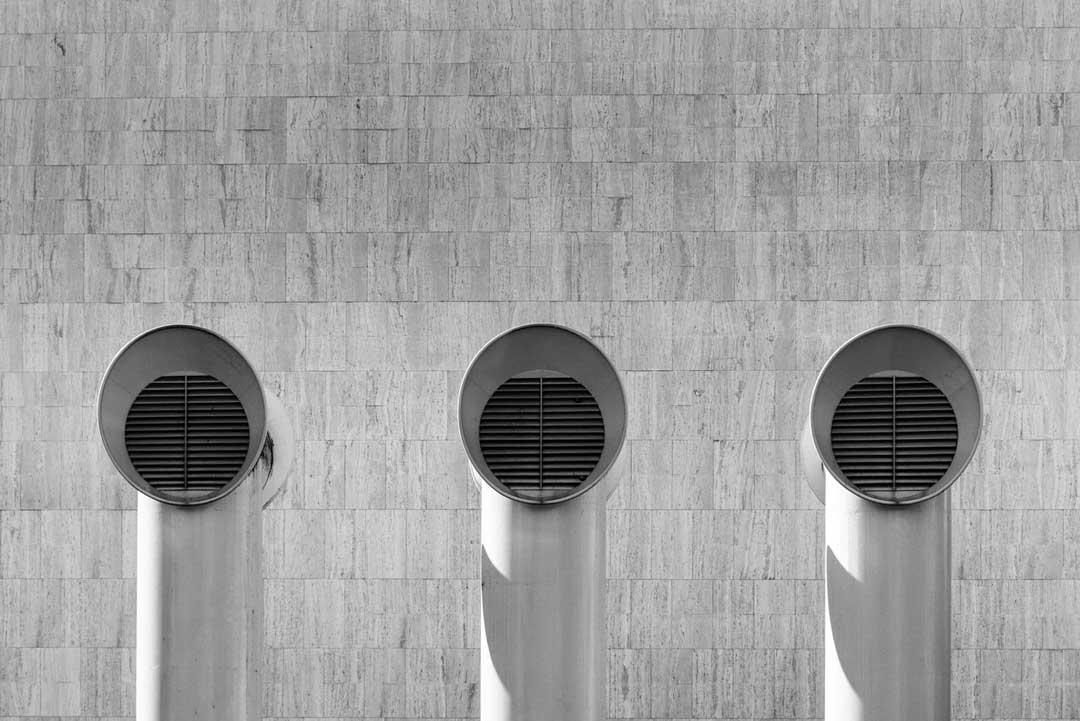Commercial Buildings Benefit of Fresh Air Ventilation
Fresh air ventilation (FAV) is the replacement of stale air with fresh air. Commercial buildings rely on proper FAV to get rid of stagnant air and replace it with clean air from the outside because stagnant indoor air contains pollutants or contaminants.
Commercial building ventilation is an essential aspect of an HVAC (heating, ventilation, and air conditioning) system because it directly impacts the indoor air quality and the energy efficiency of the HVAC system. Proper FAV dilutes toxic gases (e.g., carbon dioxide), minimizes odors, and helps to combat the spread of respiratory diseases, including COVID-19.
This article lists the benefits of FAV in commercial buildings. But first, let’s start by helping you understand two essential aspects of FAV: indoor air quality and natural ventilation.
Indoor Air Quality (IAQ)
Indoor air quality (IAQ) refers to the quality of air inside a building. It plays a vital role in the wellbeing, comfort, and health of building occupants. Poor IAQ can lead to impaired learning in educational establishments, diminished workplace productivity, and Sick Building Syndrome.
IAQ is a result of factors such as microbial contaminants, particulates, and noxious gases. These and other energy or mass stressors can cause health problems. The use of proper fresh air ventilation (FAV), air filtration, and source control significantly reduces contaminants from the air and maintains good IAQ.
The process of determining the IAQ of a commercial building involves the following.
- Computer modeling of the air inside the building
- Monitoring the level of human exposure to contaminants
- Collection and assessment of samples from the air inside the building
- Collection and evaluation of samples from surfaces inside the building
IAQ is one aspect of indoor environmental quality (IEQ). Other elements include the psychological and physical elements of indoor spaces. Such as indoor aesthetic, lighting, thermal comfort, and acoustics.
Natural Ventilation
Natural ventilation refers to the ventilation of an indoor space without the use of mechanical equipment. Forces lead to pressure differences that cause external air to flow into an indoor space. Natural ventilation can be wind-driven or buoyancy-driven.
Wind-driven commercial building ventilation occurs when wind around a building and openings around its perimeter create pressure differences. As a result, air from the exterior flows into the building. Buoyancy-driven ventilation arises when temperature differences between the building interior and exterior result in a directional buoyancy force.
Buildings with natural ventilation are sometimes referred to as “breathing buildings” because of the variability of the effects of winds and the natural processes (such as the heat that naturally comes from people) that create interior-exterior temperature differences.
Global and microclimate thermal phenomena cause differences in static pressure. These differences create the airflow known as wind. Static pressure of air refers to the pressure inside a free-flowing stream of air. Dynamic air pressure is the pressure that wind exerts when it comes into contact with an object, such as a building or hill.
Wind affects natural ventilation, the rate at which external air infiltrates it, and the resulting gain or loss of heat. As height increases, so does the speed of the wind. Frictional drag diminishes the speed of the wind as it approaches the ground.
Benefits of Proper Commercial Building Ventilation
Commercial buildings house the workforces of various organizations, including businesses, government institutions, educational institutions, healthcare facilities, and non-profit organizations. One of the most critical investments organizations can make is in the proper ventilation of their buildings.
Here are the benefits of having good ventilation in commercial buildings.
1. Improves Energy Efficiency
The HVAC systems in commercial buildings account for a sizable portion of the energy consumption. Good ventilation helps to optimize the use of energy. A high-quality fresh air ventilation system achieves energy efficiency using energy recovery ventilation, demand-controlled ventilation, and variable-speed compressors.
2. Keeps Employees Comfortable
Everyone wants to work in a comfortable environment, especially since most employees spend a considerable part of their days in our workplaces. Indoor air quality factors significantly into how comfortable your employees are. Proper ventilation ensures your employees’ comfort as the air inside your building is at a comfortable temperature and is free of irritating air pollutants.
3. Improves Your Customers’ Experience
Your customers, students, tenants, or other people your organization serves will notice when they enter an indoor space with good air quality. They feel a sense of relief, especially if the climate outside is harsh. Therefore, investing in proper ventilation for your building is a way to improve the experience of the people you serve.
4. Enhances Workplace Productivity
Proper ventilation and good indoor air quality support cognitive skills, focus, positive moods, job satisfaction, and more. Ventilation helps cognitive performance as it increases indoor oxygen levels and removes excess carbon dioxide. One Harvard study found a direct correlation between the quality of indoor air and decision-making.
5. Supports Good Respiratory Health
Air pollutants inside commercial buildings can cause occupants to suffer sick building syndrome, respiratory ailments, and other health problems. Poor indoor air quality can also exacerbate some existing health problems, such as allergies and diseases like asthma. Proper ventilation helps to prevent or resolve these health problems by reducing or removing air pollutants.
6. Regulates Indoor Humidity
Fresh air ventilation systems use the process of energy recovery ventilation to minimize the energy an HVAC system requires to humidify fresh air. Proper ventilation ensures humidity levels are between 40–60% to minimize mold and harmful microorganisms. Regulating indoor humidity is, therefore, one way to prevent health problems.
Provide Your Building Occupants With All the Benefits of Fresh Air
High-quality fresh air ventilation is one of the most important investments property owners can make in their commercial buildings because ventilation directly affects the quality of the indoor environment — specifically, the indoor air quality. Proper commercial building ventilation improves the building’s energy efficiency and keeps occupants comfortable, productive, and healthy.
Industrial Mechanical Contractors designs top-tier HVAC systems for commercial buildings in Southeastern Pennsylvania, South Jersey, and Delaware’s New Castle County. Contact us today and let’s make sure the occupants of your commercial building enjoy all the benefits of fresh air.






